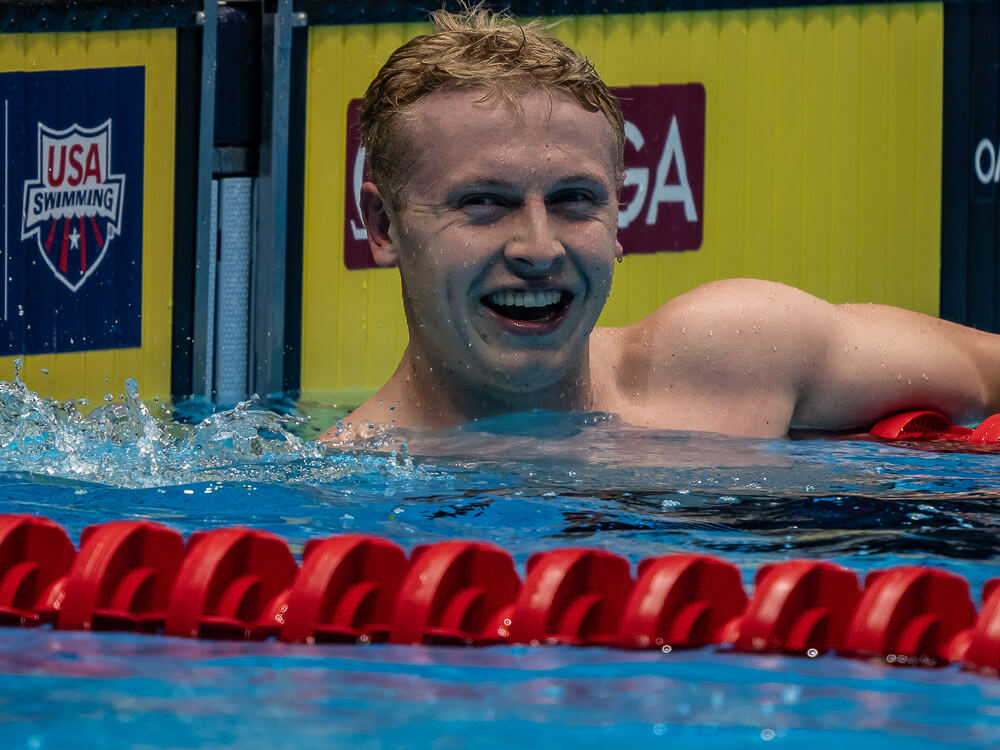International Divide in NCAA Swimming Growing More Pronounced on Men’s Side

International Divide in NCAA Swimming Growing More Pronounce on Men’s Side
You had to keep scrolling, keep scrolling down the results to find the capital “A” next to NC State’s name last Friday.
The Wolfpack had just set the American record in the men’s 400 medley relay at the NCAA Championships. You wouldn’t have known that from looking at the podium at the Weyerhauser King County Aquatic Center podium … because the Wolfpack didn’t earn a place on the podium, not even the step that is just the tile deck for eighth.
No, NC State’s American record was good for just ninth place, more than five seconds off the winning time and meet record set by Florida, with two Great Britain internationals and a Canadian Olympian.
In between stood seven teams with swimmers from eight countries, all faster than the Americans quartet of Quintin McCarty, Sam Hoover, Luke Miller and Jerry Fox. And with the record came a distillation of a growing divide in NCAA men’s – but only men’s – swimming in the United States.
Plenty of digital ink has been spilled about the current state of the U.S. men’s program. It struggled mightily at the Paris Olympics. Many of its best swimmers are entering the latter stages of their careers, and young stars are few and far between. The U.S. talent pool is thin at the top, thin in the middle and has a long tail of swimmers that are international nonfactors, with only a few showing the upside to change that. The competition at recent NCAA championships is a reflection of that more than a cause.
At the 2025 NCAA Championships, seven of the 13 individual races were won by international student-athletes, led by Hubert Kos’ three titles. That’s an improvement on 2024, when internationals won eight times. Each of the last four swimmers who have maxed out at three individual gold medals – Kos, Leon Marchand in 2023 and 2024 and Josh Liendo in 2024 – have been international swimmers. The last American to do it was Shaine Casas in 2021.
But it’s not just winners. It’s depth. Nearly half of the first-team All-Americans this year were non-Americans, at 47 out of 104. Ten of 13 events had at least half of the A final being non-Americans, with the pinnacle being the 50 freestyle and 100 backstroke in which no American finished in the top four of either. (The former event featured two American representatives at the last Olympics in that event, Jack Alexy and Chris Guiliano.)
This dynamic applies only for the men’s competition at the moment. No men’s final at NCAA had fewer than two international swimmers; only three women’s finals had more than two. All 13 individual titles at the women’s meet were taken home this year by Americans after the U.S. went 12-for-13 last year (Virginia’s Jasmine Nocentini the lone exception in the 100 breast). The closest to the top step this year was a pair of silver medals, from Hungarian Minna Abraham of USC in the 200 free and Irish Olympic medalist Mona McSharry in the 100 breast. The 200 free and 100 back each had four non-American A finalists.
The women’s meet produced less than half the number of international All-Americans at 23, while representing a broader sweep of the United States, with All-Americans from Mississippi, South Dakota and Delaware.
(One oddity is that the situations are reversed for diving: Americans swept all three men’s titles at NCAAs for the second straight year; no American female diver finished in the top two – it would’ve been the top three if not for Lanie Gutch’s bronze on 1-meter – and international divers monopolized the top five spots on 3-meter.)
The million-dollar question is, why. On the men’s side, the coincidence of Olympic struggles and NCAA struggles indicates a pipeline problem. Americans aren’t getting slower because international swimmers are taking their college spots, and the NCAA is unquestionably better for collecting the best and brightest swimming talent no matter where in the world is springs forth from. But if the Olympics wasn’t enough of one, the continued trends in the NCAA should be a warning sign that something in the developmental pathway needs to change.
The U.S. continues to churn out high-level female swimmers who are capable of winning medals internationally. More important for competitions like the NCAA, the U.S. was forced to leave home after Olympic Trials a bunch of women who probably would’ve made Olympic finals if they were in the meet.
The men scraped together a team from what was available, and while they avoided the unusual spectacle that was Jake Mitchell’s push for an A cut in the 400 free in 2021, it didn’t result in a much better outcome in the Olympics, needing Bobby Finke’s final-day 1,500 to save blushes by finally adding an individual men’s medal to the tally.
Neither outcome pointed to solutions, only that there is an underlying problem. And it doesn’t seem to be one that’s abating.




.jpg)
Very Simple fix! Put a 90% Tariff on NIL and Academic money going to International Athletes!